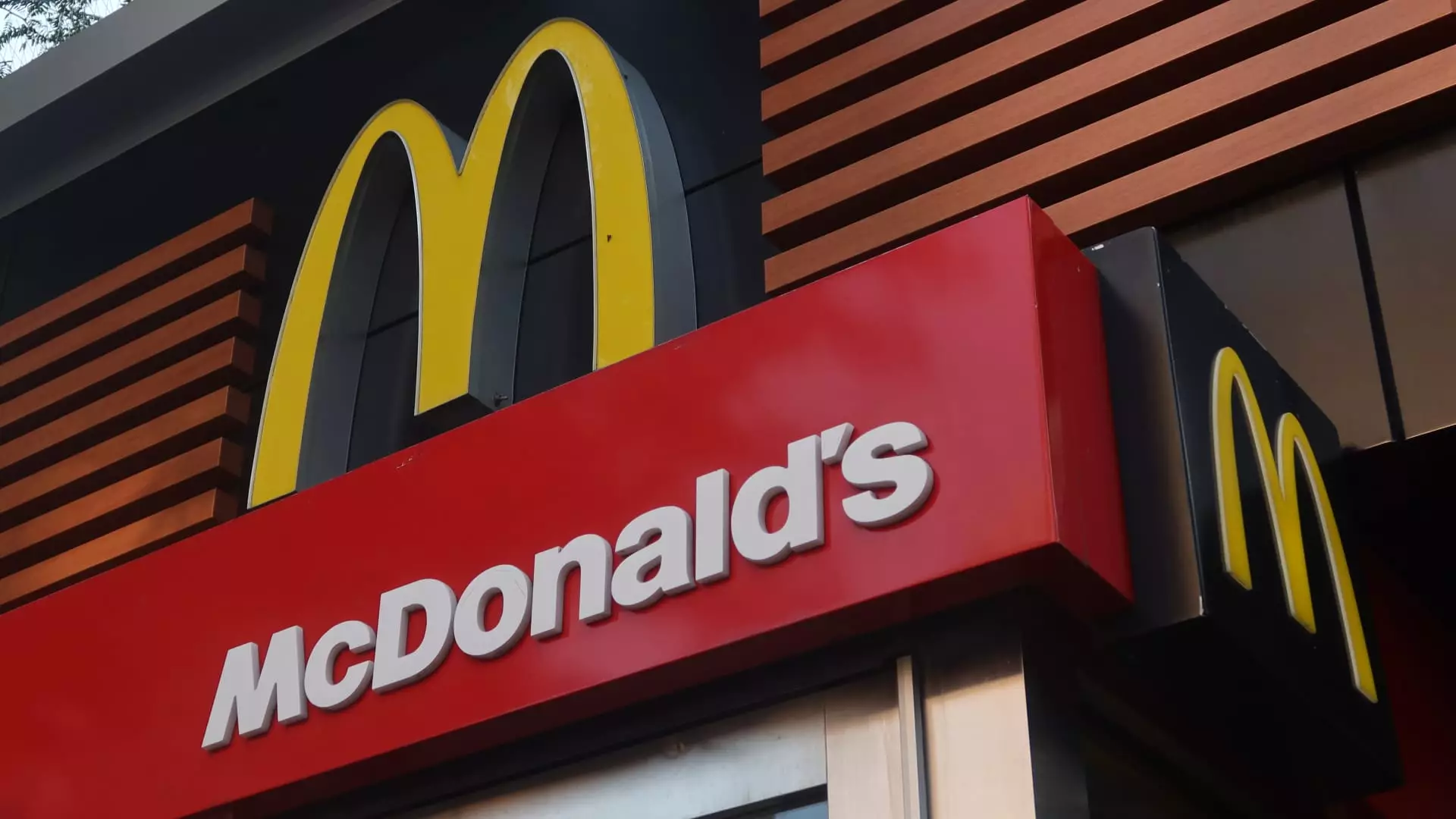Despite McDonald’s recent report of better-than-expected financial results, a critical eye uncovers a deeper narrative often brushed aside by corporate press releases. The company’s impressive quarterly earnings—driven by strategic promotions and marketing blitzes—offer a glimmer of hope, yet they conceal an underlying vulnerability: the fragile state of the low-income consumer base that forms the backbone of McDonald’s core market. Such “resilience” is superficial at best. It panders to the illusion of sustained growth, while overlooking the socioeconomic realities that threaten the very foundation of McDonald’s future prospects.
This apparent rebound is less a testament to genuine consumer loyalty and more a consequence of tactical promotions like the $5 meal deal or the recent reinstatement of Snack Wraps. These initiatives are Band-Aids on a much deeper wound: a consumer class increasingly squeezed by inflation, stagnant wages, and economic uncertainty. The crowded landscape of quick-service restaurants can generate temporary spikes—yet, beneath surface-level successes lies a mounting challenge: can McDonald’s sustain its momentum when the key segment—low-income consumers—is in continuous decline?
Demographic Challenges: The Unsustainable Dependence on a Struggling Base
The corporate leadership’s acknowledgment of the “bifurcated consumer base” reveals a cautious, defensive stance. While the company claims to be working on making core menu items more affordable for low-income patrons, these efforts seem reactive rather than strategic. The reality is that McDonald’s has become too dependent on its traditional customer segment, which is increasingly vulnerable due to broader economic disparities.
While the international markets show promise with expanding sales and consumer approval, this success is not universally applicable. The U.S. market, historically the company’s forte, reveals troubling signs of a long-term decline in consumer visits—particularly among its most loyal, budget-conscious customers. When quick-service restaurants face a decline in foot traffic, it’s a sign of larger systemic issues: a shrinking pool of economically viable customers, eroded purchasing power, and the failure of the fast-food industry to adapt to changing social and economic realities.
The Illusion of Economic Salvation: Softening Consumer Confidence and the Future Outlook
There is a concerning optimism in the company’s outlook, with executives expecting stronger results in the second half of the year. However, this expectation hinges on what some might interpret as optimistic assumptions—favorable comparison periods and the fading shadow of last year’s outbreaks. It’s a short-sighted view that does not account for the persistent economic headwinds: inflation, job insecurity, and rising living costs.
Even with the profitability gains—record earnings, increased system-wide sales, and international growth—these figures serve as a smokescreen for more profound issues. The consumer’s wallet remains tight, and the double-digit decline in visits among low-income consumers signals an erosion of the primary demographic that sustains McDonald’s. The real challenge is whether the chain’s promotional strategies are enough to cover up the cracks, or if they merely postpone the inevitable reckoning.
Economic Trends and Consumer Behavior: A Worrisome Path for the Fast-Food Giant
McDonald’s recent success appears to rely heavily on marketing tactics and new menu launches. Yet, these are temporary fixes. The core issue is a shifting societal landscape where consumers—especially those with limited financial means—are increasingly rationing their discretionary spending. The frequent visits of low-income individuals, historically McDonald’s strength, are diminishing, and no promotional stunt can substitute for genuine economic stability.
Furthermore, McDonald’s international expansion, while promising, highlights the divided nature of its global strategy. Success in markets like the UK, Australia, or Japan may not necessarily translate into resilience at home. The company’s dependence on being seen as a value leader in markets with different economic pressures raises questions about its long-term adaptability. If the U.S. consumer continues to retreat, and competition intensifies, McDonald’s risk losing its market dominance, reducing itself to a temporary beneficiary of superficial brand loyalty.
Ultimately, McDonald’s current narrative of resilience is a reflection of short-term tactical wins rather than a sustainable growth story. As a center-right leaning observer, I see a corporation caught in a cycle of superficial promotions, tactical marketing, and an age-old reliance on a demographic slowly slipping away. Its failure to meaningfully address the economic struggles of its core customers signals a perilous future. In a climate where economic realities dominate consumer behavior, McDonald’s must evolve beyond promotional gimmicks and embrace a more fundamental approach—one that recognizes and adapts to the declining purchasing power and shifting priorities of the very demographic that built its empire. Anything less is simply a mirage—an illusion of strength masking vulnerabilities that could define its downfall.

